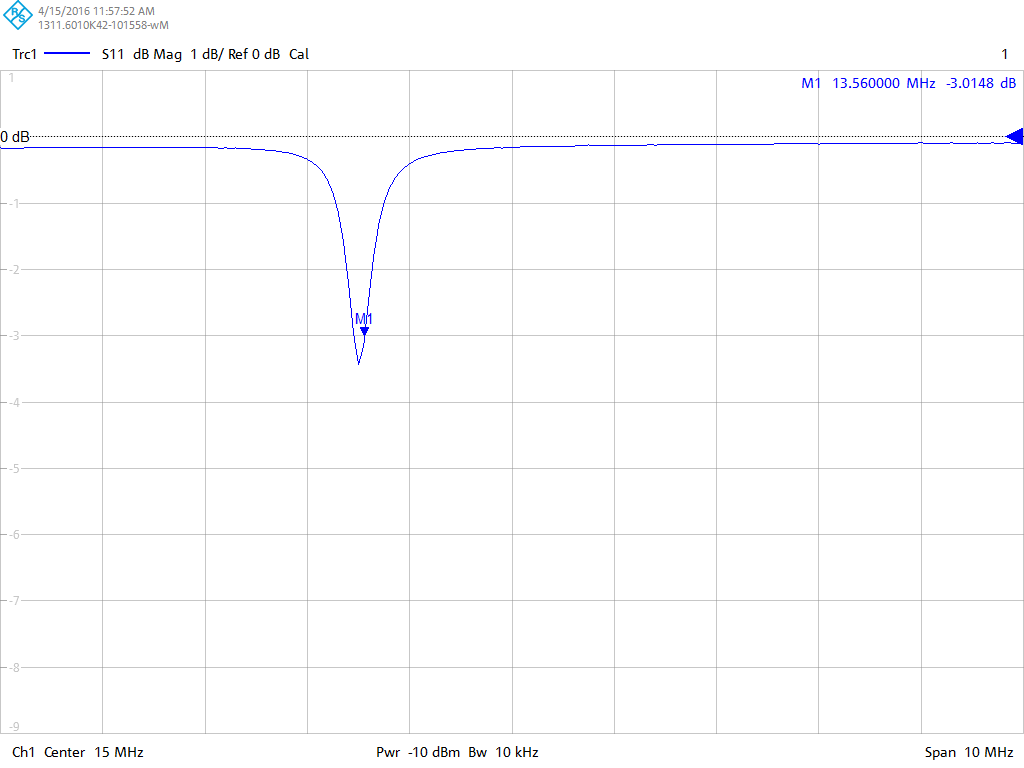The network analyzer (S11, dB magnitude) measures the return loss in the coil antenna over a frequency span to find the optimal value of the parallel capacitors.
The frequency that results in a dip is the resonance frequency of the Near Field Communication (NFC) tag antenna. When using this method, the nRF52832 chip does not need to be powered. However, if the nRF52832 System on Chip (SoC) is powered, RIN has to be set to a fixed value. See Configuring the chip for more details.
The required equipment for this method is:Complete the following steps to tune the antenna with the network analyzer method:
Figure 2. Example reading from network analyzer


Note: The dip at approximately 13.56 MHz shows that the resonance frequency of the NFC tag is almost at 13.56 MHz.